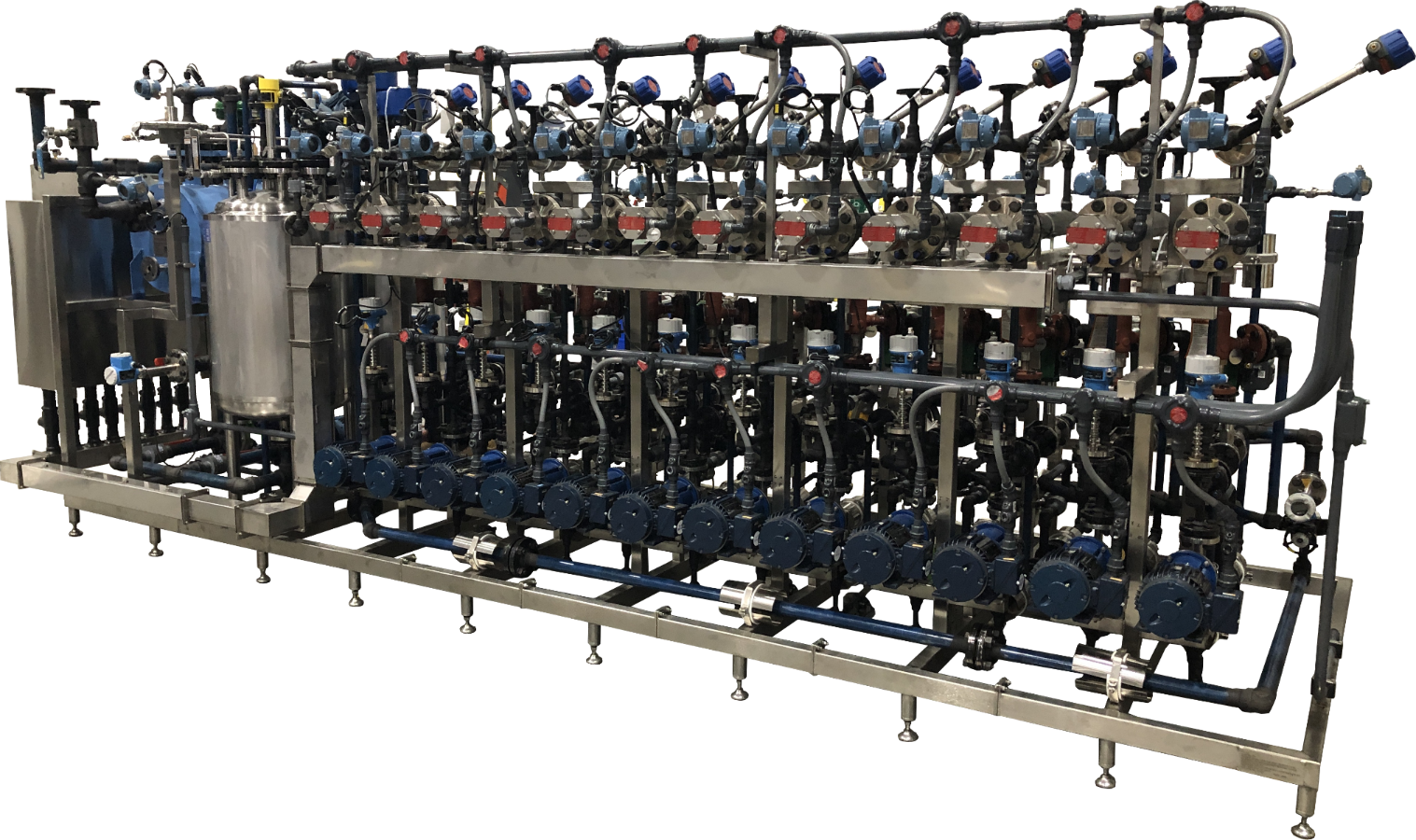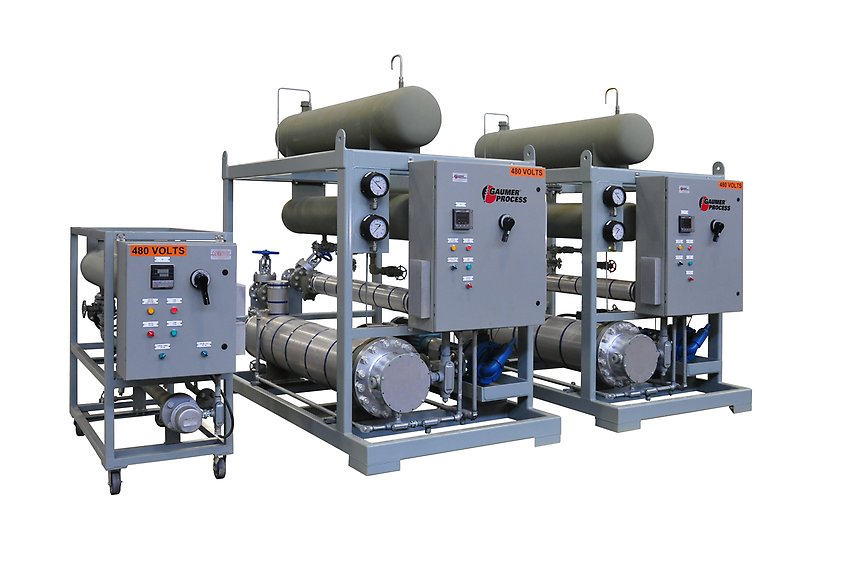Revealing the Potential of DVS Heat Transfer Systems in Modern Thermal Management
Wiki Article
Technologies in Heat Transfer Equipments: What You Need to Know for Optimal Performance
Developments in Heat transfer systems are transforming performance across different markets. Advanced products like graphene and nanofluids promise considerable improvements in thermal conductivity. The assimilation of IoT and device knowing provides opportunities for real-time monitoring and enhanced power performance. The landscape of thermal management is rapidly evolving. Recognizing these growths is necessary for accomplishing perfect system performance and sustainability in the future. What details improvements are shaping this transformation?Arising Products for Improved Heat Transfer

Advanced Heat Exchanger Designs
While standard Heat exchangers have actually served their objective in various applications, advanced styles are currently arising to meet the increasing needs for performance and performance. These cutting-edge styles, such as plate, shell-and-tube, and finned-tube Heat exchangers, include improved area and enhanced circulation patterns to boost thermal transfer prices. In addition, compact layouts permit decreased area needs without compromising effectiveness. Advanced materials, such as composites and corrosion-resistant alloys, additionally improve longevity and efficiency under severe problems. Simulation modern technologies and computational liquid characteristics are significantly utilized to fine-tune these designs, guaranteeing peak Heat transfer qualities. As markets seek to reduce energy consumption and make best use of result, the fostering of sophisticated Heat exchanger designs is crucial in attaining these purposes.The Function of Nanotechnology in Heat Transfer
Nanotechnology plays a vital function in enhancing thermal conductivity within Heat transfer systems. By controling materials at the nanoscale, researchers have attained substantial enhancements in energy performance. These innovations not only optimize efficiency however additionally contribute to more sustainable power solutions.Enhanced Thermal Conductivity
Substantial improvements in thermal conductivity have arised through the application of nanotechnology, revolutionizing Heat transfer systems across different industries. By integrating nanoparticles into Heat transfer liquids and materials, scientists have accomplished amazing rises in thermal conductivity. These nanoparticles, such as carbon nanotubes, graphene, and metal oxides, improve the Heat transfer residential or commercial properties due to their high surface and unique thermal features. The resulting composites show enhanced efficiency in applications ranging from electronics cooling systems to renewable resource technologies. Moreover, the capability to tailor the size, shape, and make-up of nanoparticles permits enhanced thermal management services. As a result, nanotechnology proceeds to play a pivotal role in the advancement of a lot more effective and reliable Heat transfer systems, leading the way for boosted commercial applications.
Power Performance Improvements

Combination of IoT in Heat Transfer Solutions
The integration of IoT in Heat transfer systems presents the implementation of clever sensors that improve operational performance. These sensors enable real-time information surveillance, enabling instant adjustments and optimizations. This technical advancement has the potential to considerably enhance performance and power management in Heat transfer applications.Smart Sensors Execution
As Heat transfer systems evolve, the assimilation of wise sensors with the Web of Things (IoT) has actually become a transformative strategy. These sensors make it possible for real-time surveillance of circulation, stress, and temperature rates, improving system performance and reliability. By collecting and transferring information, they facilitate positive upkeep, reducing the danger of system failings. Additionally, wise sensing units add to power savings by refining operational specifications based upon ecological problems. Their ability to examine anomalies and trends permits notified decision-making, ensuring peak performance of Heat transfer systems. As markets significantly adopt this innovation, the execution of clever sensing units stands to change how Heat transfer systems are handled, leading the way for better sustainability and improved efficiency end results.Real-Time Information Surveillance
Just how can real-time information monitoring enhance the efficiency of Heat transfer systems? By integrating Web of Points (IoT) modern technology, Heat transfer systems can utilize constant data collection from smart sensors. This real-time surveillance permits instant analysis of flow, stress, and temperature level prices, making it possible for drivers to determine ineffectiveness immediately. As a result, modifications can be made to enhance performance, decrease power usage, and prolong devices lifespan. Additionally, anticipating upkeep can be carried out, reducing unanticipated downtime and expensive repairs. The capacity to picture performance metrics with control panels improves decision-making, cultivating a proactive approach to system monitoring. Inevitably, real-time information keeping an eye on not only enhances operational performance but likewise adds to sustainability objectives within industrial procedures.Power Efficiency and Sustainability Trends
Power performance and sustainability trends are reshaping the landscape of Heat transfer systems, driving innovation and compliance throughout numerous industries. Organizations are progressively focusing on energy-efficient designs to decrease operational expenses and decrease environmental effects. The assimilation of eco-friendly energy sources is coming to be more prevalent, allowing Heat transfer systems to operate sustainably while satisfying governing needs. Furthermore, advancements in materials and innovations advertise lower power usage and enhance total performance. Lifecycle evaluations are also gaining grip, permitting companies to examine the ecological impact of Heat transfer systems from production to disposal. This concentrate on sustainability not just sustains company obligation however likewise placements companies competitively in a market where consumers increasingly prefer environmentally friendly options. As a result, energy efficiency and sustainability continue to be critical factors to consider for future growths in Heat transfer technology.Advancements in Thermal Administration Solutions
While the demand for reliable Heat transfer remains to increase, innovations in thermal monitoring options are emerging to resolve both performance and sustainability challenges. Advanced products, such as phase adjustment materials and nanofluids, are being created to improve Heat transfer effectiveness - DVS Heat Transfer Systems. These materials boost thermal conductivity and enable better temperature level guideline in various applications. In addition, innovations like energetic thermal control systems are getting traction, making it possible for real-time modifications to manage Heat flow effectively. These systems add to power savings and minimize the ecological impact of thermal processes. The integration of IoT in thermal management assists in monitoring and predictive maintenance, making sure maximized performance DVS Heat Transfer Systems and longevity of Heat transfer systems. On the whole, these developments stand for considerable strides towards even more sustainable thermal administration methodsFuture Instructions in Heat Transfer Technology
Emerging innovations in thermal management services indicate an appealing future for Heat transfer innovation. Researchers are increasingly concentrating on creating products with remarkable thermal conductivity and boosted power performance. Technologies such as nanofluids, which include suspended nanoparticles, use considerable renovations in Heat transfer efficiency. Furthermore, the assimilation of smart products that adapt to differing temperature level conditions is getting traction, permitting more receptive and effective systems. The surge of additive manufacturing techniques is additionally making it possible for the layout of complicated Heat exchanger geometries that optimize liquid circulation. In addition, the execution of equipment learning formulas is expected to transform the optimization of Heat transfer systems, facilitating anticipating maintenance and efficiency enhancement. Collectively, these developments are poised to change the landscape of Heat transfer modern technologies in different sectors.
Regularly Asked Concerns

How Do I Select the Right Heat Transfer System for My Application?
Choosing the ideal Heat transfer system involves evaluating application needs, including temperature level varieties, fluid homes, and efficiency demands. Examining system types, upkeep considerations, and cost-effectiveness additionally plays a necessary role in making an educated decision.What Are the Upkeep Needs for Advanced Heat Exchangers?
Upkeep requirements for sophisticated Heat exchangers usually include routine examinations, keeping an eye on for leakages, cleaning of surfaces, and assuring ideal flow prices. Sticking to producer standards warranties efficient operation and extends the equipment's lifespan.
Exactly How Do Ecological Factors Impact Heat Transfer Performance?
Ecological factors significantly affect Heat transfer efficiency. Variations in humidity, temperature, and airflow effect thermal conductivity and convective Heat transfer, eventually influencing system efficiency and requiring factor to consider throughout the layout and procedure of Heat transfer systems.What Safety And Security Standards Apply to Heat Transfer Equipments?
Safety requirements for Heat transfer systems usually include standards from organizations such as ASME and ASTM. DVS Heat Transfer Systems. These criteria address materials, layout, and operational techniques to ensure reliability, performance, and protection versus risks in numerous applications
Exactly How Can I Troubleshoot Typical Heat Transfer System Issues?
Fixing usual Heat transfer system concerns involves looking for leaks, making certain proper liquid flow, checking insulation honesty, and confirming temperature level differentials. Identifying these aspects can aid preserve system effectiveness and prevent further issues.Nanotechnology plays a vital duty in enhancing thermal conductivity within Heat transfer systems. Substantial developments in thermal conductivity have actually arised via the application of nanotechnology, transforming Heat transfer systems across numerous industries. Developments in thermal conductivity with nanotechnology have actually led the way for amazing improvements in power effectiveness within Heat transfer systems. Power efficiency and sustainability trends are reshaping the landscape of Heat transfer systems, driving technology and conformity across different markets. The combination of IoT in thermal monitoring promotes surveillance and anticipating upkeep, ensuring optimized performance and durability of Heat transfer systems.
Report this wiki page